|
part 8. |
A rather extensive collection of wonderful magic lantern slide sets |
|
|
||||||||||
| Go to: | part 1 | part 2 | part 3 | part 4 | part 5 | part 6 | part 7 | part 8 | part 9 | part 10 |
| part 11 | part 12 | part 13 | part 14 | part 15 | part 16 | part 17 | part 18 | part 19 | part 20 | |
|
|
||||||||||
|
Utopia A strange but interesting set of 12 early 20th-century coloured magic lantern slides. It was hard to discover title and manufacturer of the set. The first slide depicts the interior of a museum with a bearded man with top hat and boots, asleep in a glass case and is titled above case "Man Asleep. Period 19th century". This character is involved in various parts of the story. The other slides show what appears to be a large military hospital or a prison or a convalescent home with slides showing a bath house, dormitory, dining hall, etc, and even one with an medical experiment or torture. Apart from the man with the top hat all the other characters are wearing blue tunics and often pill box hats. It turned out that this set is made after an interesting essay from the pen of Jerome Klapka Jerome and relates how a man was supposed to have gone to sleep and woke up after the lapse of a thousand years, when he found that the wild schemes of advanced socialists had come to pass, and that equality and fraternity now reigned supreme, that everything was provided by the State, and everybody shared and shared alike. The first picture illustrates where the man wakes up and finds himself in a glass case inside a museum in the City of London. There is a label above his head that reads 'Man asleep - period 19th Century. This man was found asleep in a house in London, after the great social revolution of 1899. From the account given by the landlady of the house, it would appear that he had already been asleep for over 10 years. It was decided, for scientific purposes, not to wake him, but just to see how long he would sleep on, and he was accordingly brought and deposited in the Museum of Curiosities on February 11th, 1900. Visitors are requested not to squirt water through the air holes.' The set is made by Theobald & Co. Slides measure 3.25 inches (8.2 cm) square. |
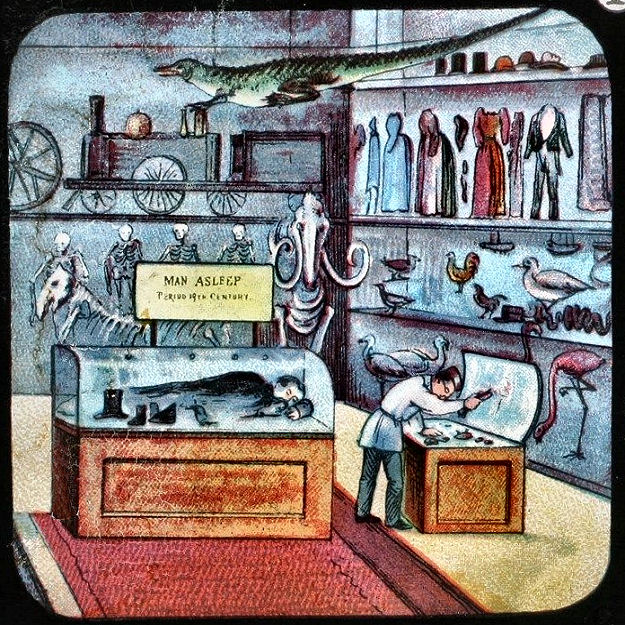 |
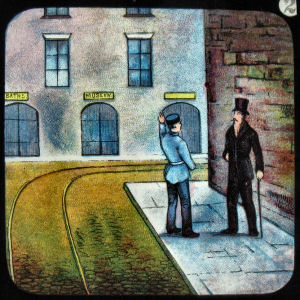 |
|
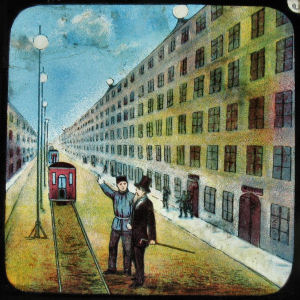 |
||
| 1. Man asleep, 19th Century. | 2. The guide takes me out for a walk. | 3. And shows me the buildings. |
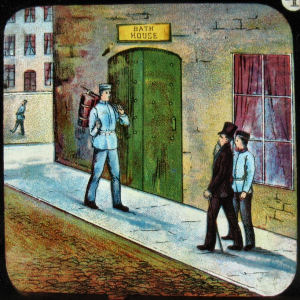 |
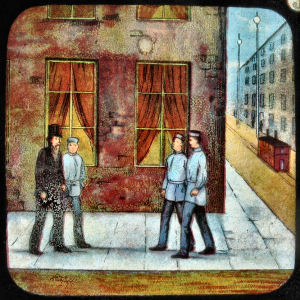 |
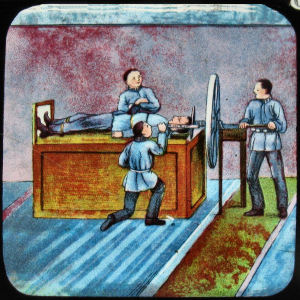 |
| 4. We meet some other inhabitants. | 5. The man with one arm. | 6. Lessening a man's abilities. |
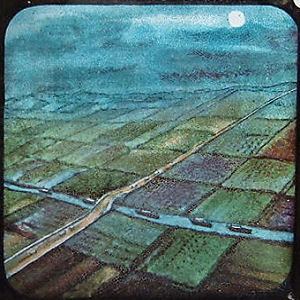 |
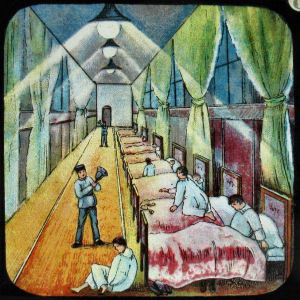 |
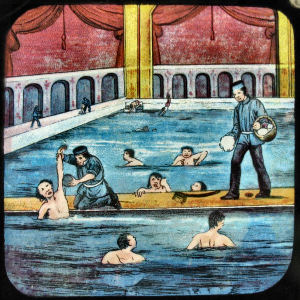 |
| 7. Our garden plots. | 8. Getting up in the morning. | 9. Washed by the State. |
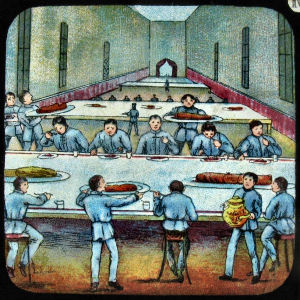 |
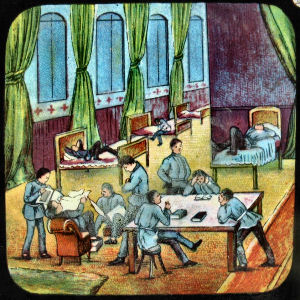 |
 |
| 10. Fed by the State. |
11. Spend the evenings doing nothing. |
12. Going to bed. |
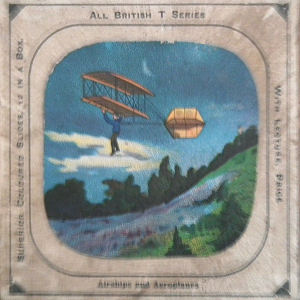 |
Airships and Aeroplanes A set of square magic lantern slides, made around 1910 by the English manufacturer Theobald & Co. The full set consists of 48 slides, 12 of which are pictured below. The texts for the other slides are available on request from the webmaster. |
|
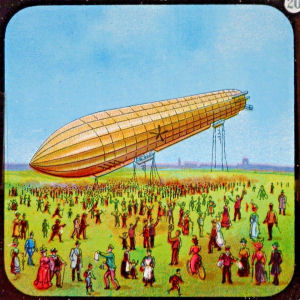 |
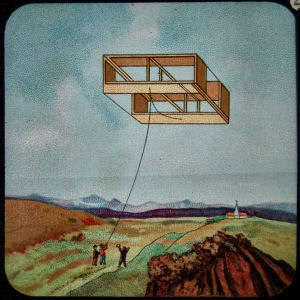 |
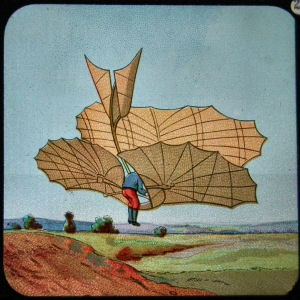 |
| No 20. The dirigible balloon Zeppelin, the 3rd landing at a small town near Hanover. | No 25 is an illustration of an airship going by the name of 'Hargrave' on the familiar kite system. | No 26. Lilienthal Gliding Machine. Lilienthal, who was a German, was father of modern flying in Europe. (more) |
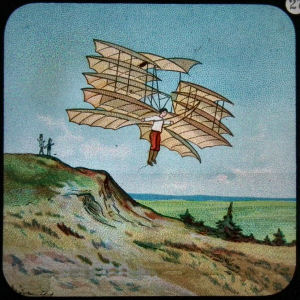 |
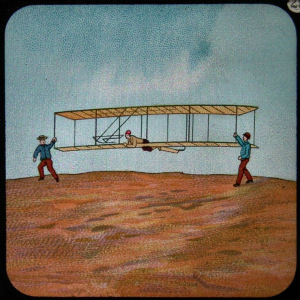 |
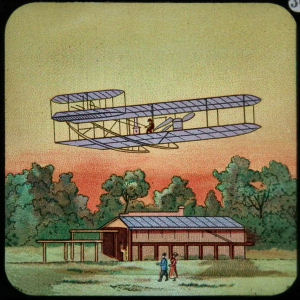 |
| No 27. This is more of the type of a number of kites or birds and was invented by Monsieur Chanute in the year 1896. (more) | No 29 brings us down to the familiar Wright aeroplanes, ... The illustration before us was taken on October 10th, 1902. | No 30 shows us another type of their machine, with one of the brothers Wright in full flight. |
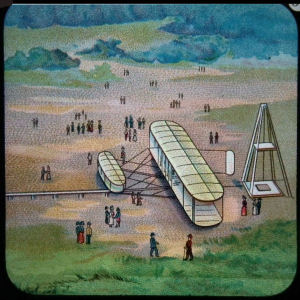 |
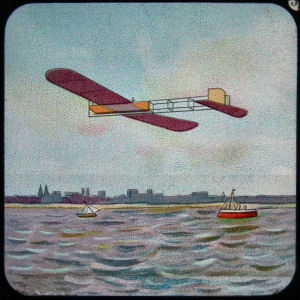 |
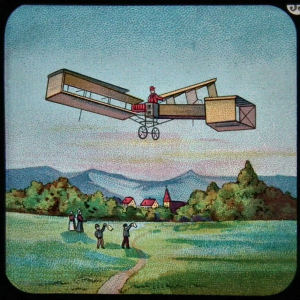 |
| No 31. Wright bros' biplane. ... In stead od starting on wheels as practically all other machines do, the Wright machine is launched from another rail. (more) | No 32. Bleriot's was de first machine to Cross the English Channel. A special feature of Bleriot's monoplanes is that the tips of all surfaces are rounded off. (more) | No 33 introduces the Baron de Cater's aeroplane ready for ascending. |
 |
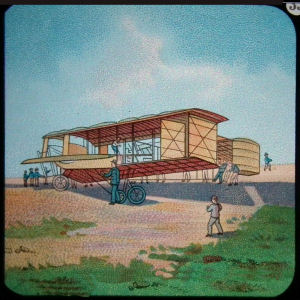 |
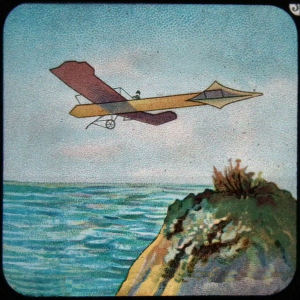 |
| No 34 shows de Baron de Cater's machine in full flight. |
No 35. Santos Dumont's aeroplane invented in 1908. The illustration shows hin in
full flight over one of the villages outside Paris. |
Probably No 36. Mr Latham in his flying machine at Dover. |
 |
Reuben Davidger: or, captured by Malay pirates
(By permission of Messrs Ward, Lock & Tyler). A set of twelve slides made by Theobald & Co., England. Size: 8.2 x 8.2 cm. |
| Unfortunately the numbers 1, 10, 11 and 12 of this series are missing. |
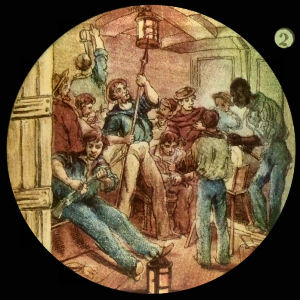 |
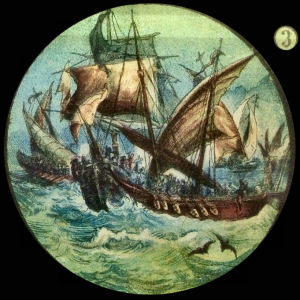 |
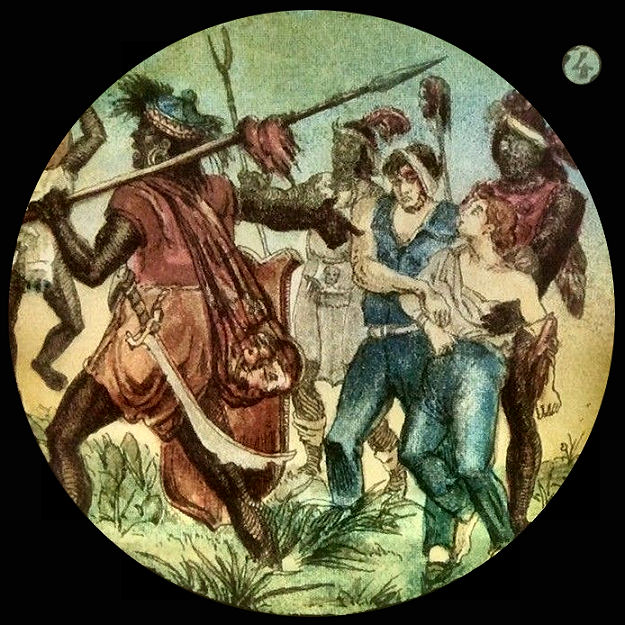 |
 |
|
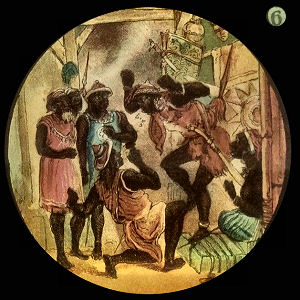 |
||
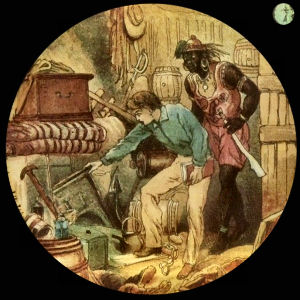 |
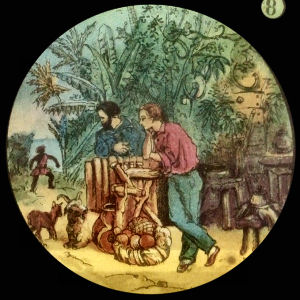 |
 |
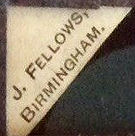 All slides are labelled with the title of the set, the number of the slide, the
title of the slide, the mention 'From life models, copyright', and the name of
the manufacturer/publisher J. Fellows, Birmingham. However Bamforth & Co. stands
a good chance to be the real maker of the slides.
All slides are labelled with the title of the set, the number of the slide, the
title of the slide, the mention 'From life models, copyright', and the name of
the manufacturer/publisher J. Fellows, Birmingham. However Bamforth & Co. stands
a good chance to be the real maker of the slides. |
What are the Wild Waves Saying? A set of 12 square magic lantern slides after the song of the same name by Joseph E. Carpenter and Stephen Glover, a duet from Paul and Florence. Possibly there are relations to an incident in Charles Dickens' novel 'Dombey and Son'.  |
|
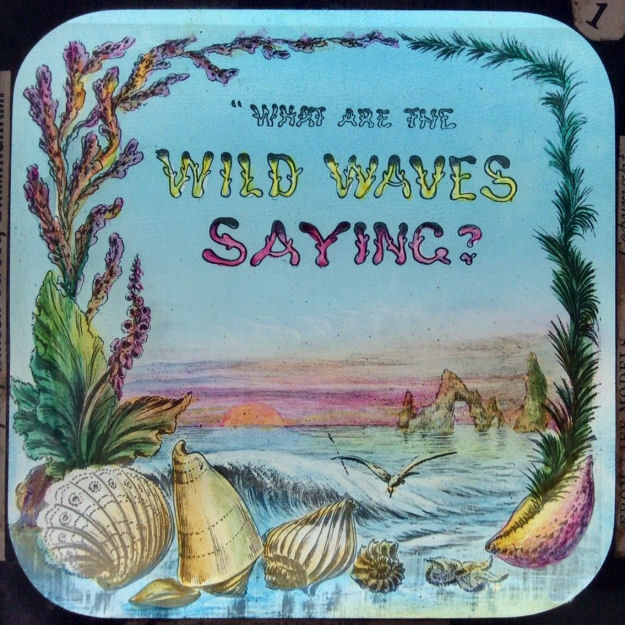 |
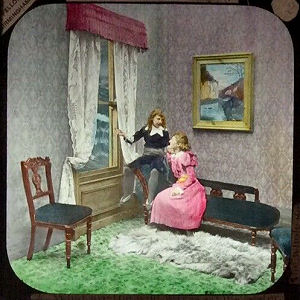 |
|
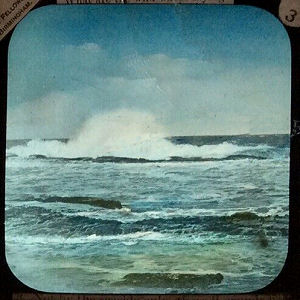 |
||
| 1. Intro, with Title | 2. What are the wild waves saying, sister, the whole day long | 3. Not by the seaside only, there it sounds wild and free |
 |
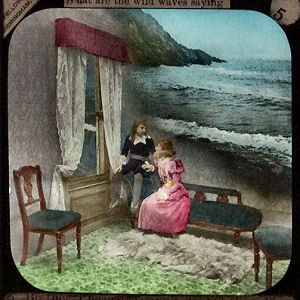 |
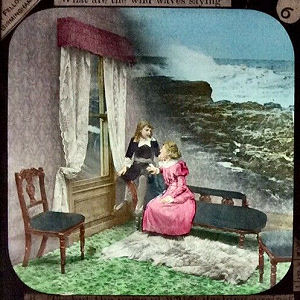 |
| 4. But at night, when 'tis dark and lonely, in dreams it is still with me | 5. Brother, I hear no singing, 'tis but the rolling wave | 6. 'Tis but the noise of water dashing against the shore |
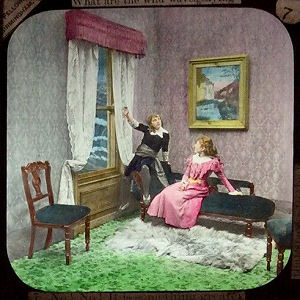 |
 |
|
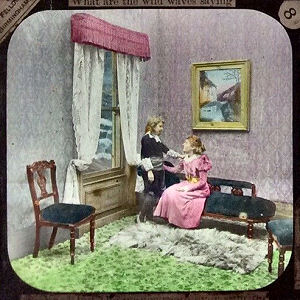 |
||
| 7. No! No! It is something greater that speaks to the heart alone | 8. Yes! but the waves seem ever singing the same sad thing | 9. What is that voice repeating ever by night and day? |
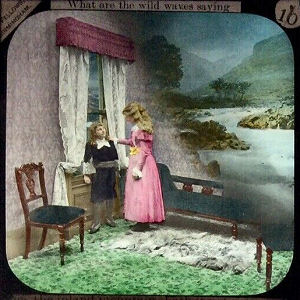 |
 |
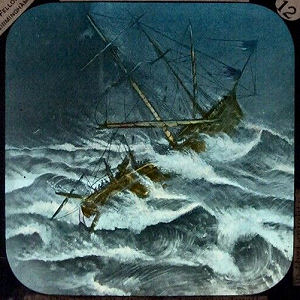 |
|
10. Brother, the inland mountain, hath it not voice and sound? |
11.Do not our voices mingle with those of the distant storm |
12. The voice of the great Creator dwells in that mighty tone |
|
(The girl with) Thirty-nine Lovers A set of probably 8 magic lantern slides made by Riley Brothers, ca 1890. No description of the story known. |
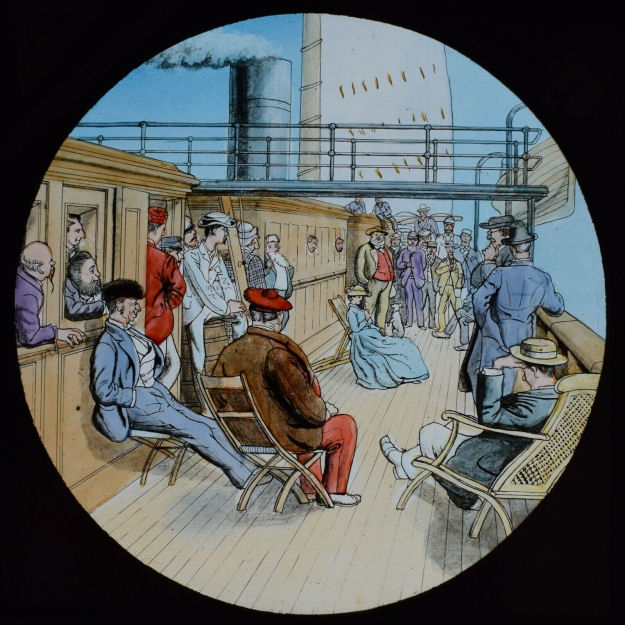 |
|
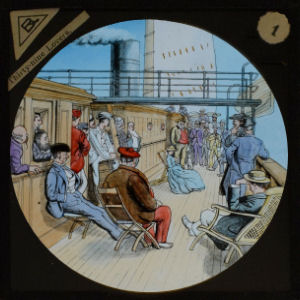 |
||
 |
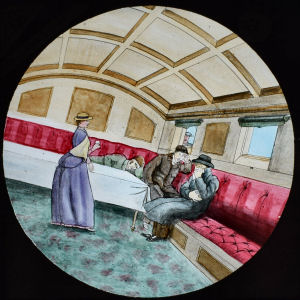 |
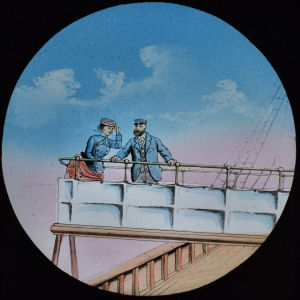 |
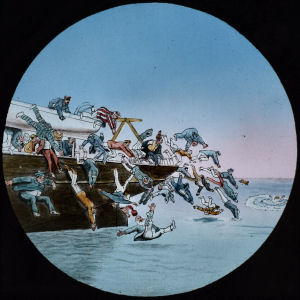 |
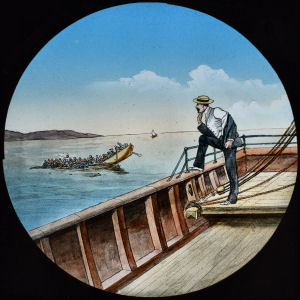 |
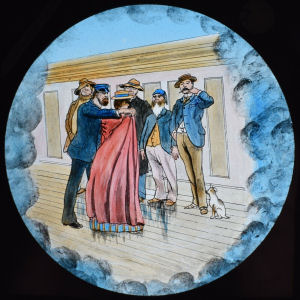 |
|
The Vicar of Wakefield A set of 24 square magic lantern slides made by the English company York & Son. The Vicar of Wakefield, subtitled A Tale, Supposed to be written by Himself, is a novel by Oliver Goldsmith. It was written from 1761 to 1762 and published in 1766. Goldsmith (1728-1774) was born in Ireland. The Vicar of Wakefield is his only novel and is generally considered his finest work. When the vicar - Dr Primrose - loses his fortune in a disastrous investment, his idyllic life in the country is shattered and he is forced to move with his wife and six children to an impoverished living on the estate of Squire Thornhill. |
||
 |
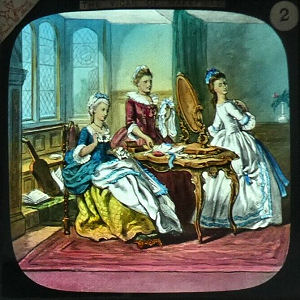 |
|
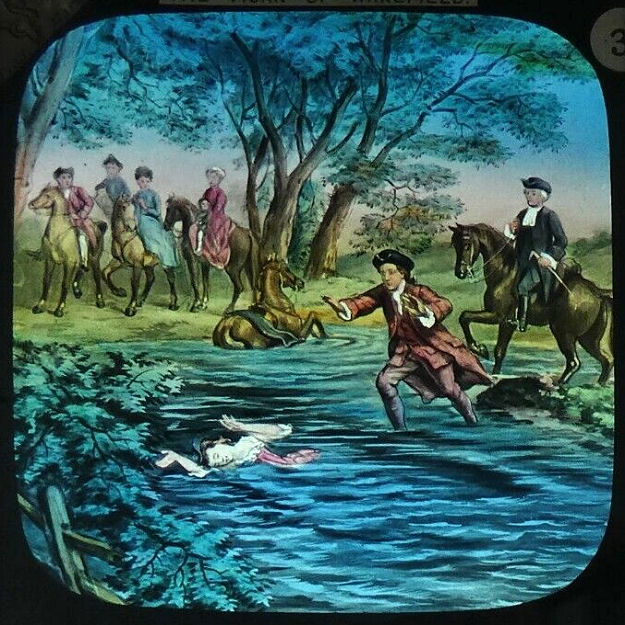 |
||
| 1. And sometimes the girls would give a concert | 2. Preparations for the wedding | 3. I perceived my daughter in a rapid stream |
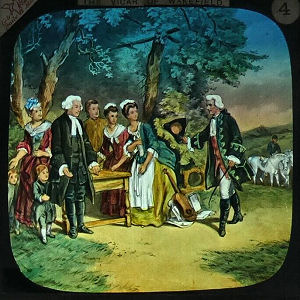 |
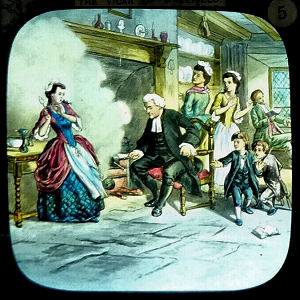 |
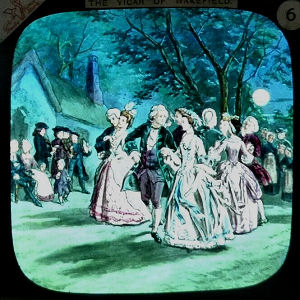 |
| 4. Giving his horse to his servant he approached us | 5. I intentionally overturned the composition | 6. Mr Thornhill and my daughter lead up the ball |
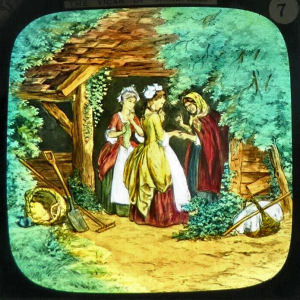 |
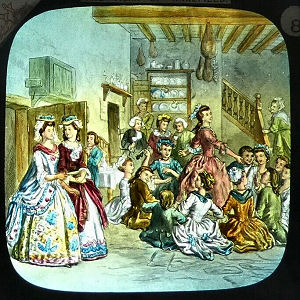 |
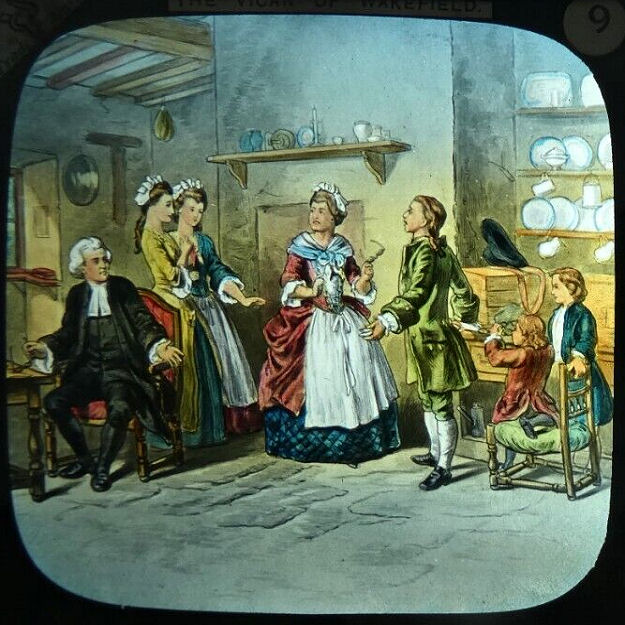 |
| 7. A fortune-telling gipsy | 8. Confusion! two acquaintances from town | 9. Here they are, a gross of green spectacles |
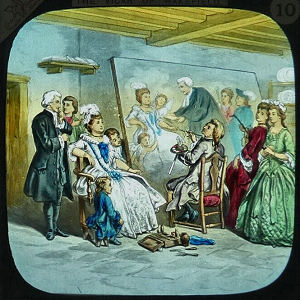 |
 |
|
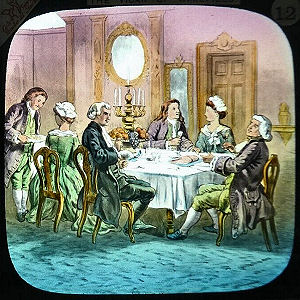 |
||
| 10. We come to an unanimous resolution | 11. O! may heaven's fury light upon you | 12. An elegant supper was brought in |
 |
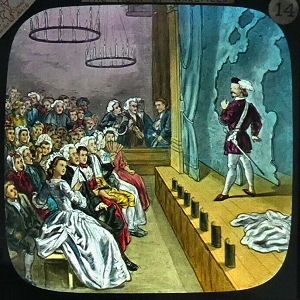 |
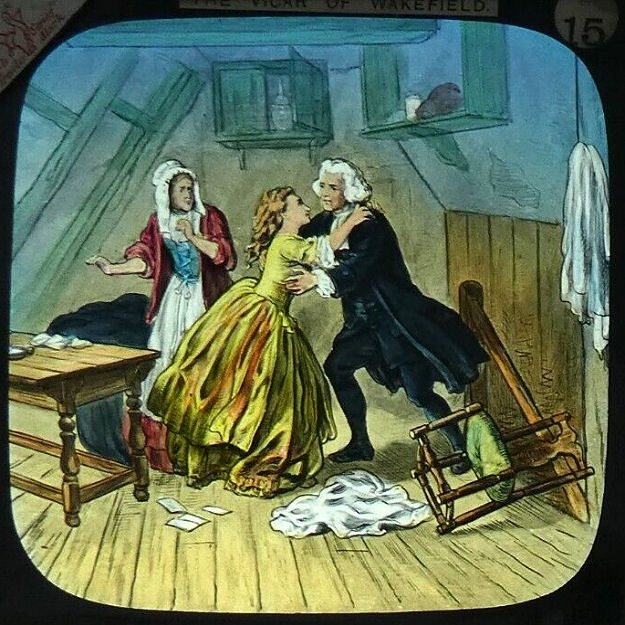 |
| 13. As sure as death, there is my master and mistress | 14. The performer advanced and stood speechless | 15. Welcome, my dearest lost one |
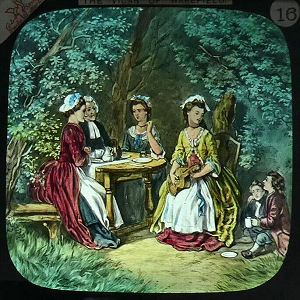 |
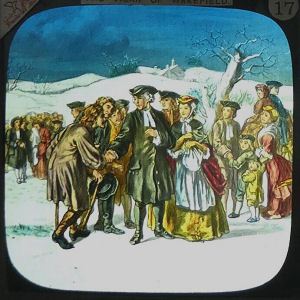 |
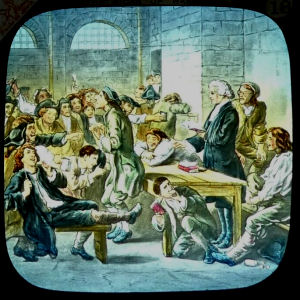 |
| 16. Let us have that melancholy air | 17. They came to bid me farewell | 18. A prison scene |
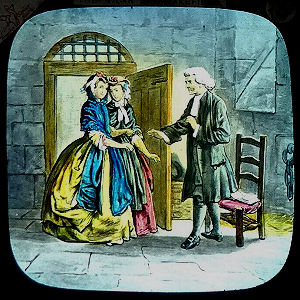 |
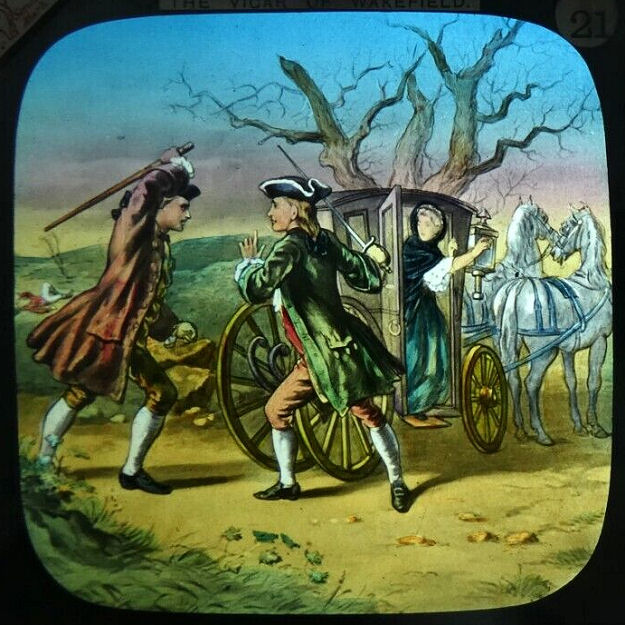 |
|
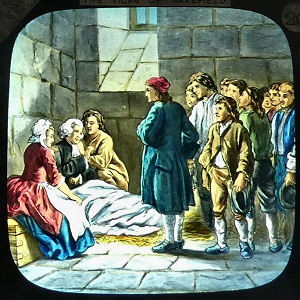 |
||
| 19. The poor girl entered my apartment | 20. The prisoners assembled | 21. Mr Burchell running up, shivered his sword |
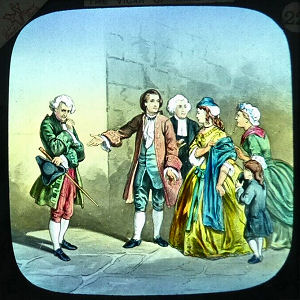 |
 |
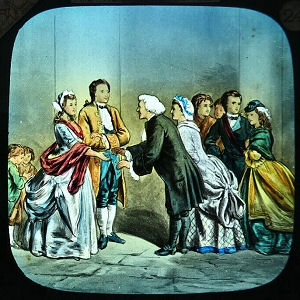 |
| 22. You see in him, madam, a villain! |
23. Here is the license by which you were married |
24. The baronet was married, and then my son |
|
More series.... |
||
| |
©1997-2025 'de Luikerwaal' All rights reserved. Last update: 14-02-2025. |
|